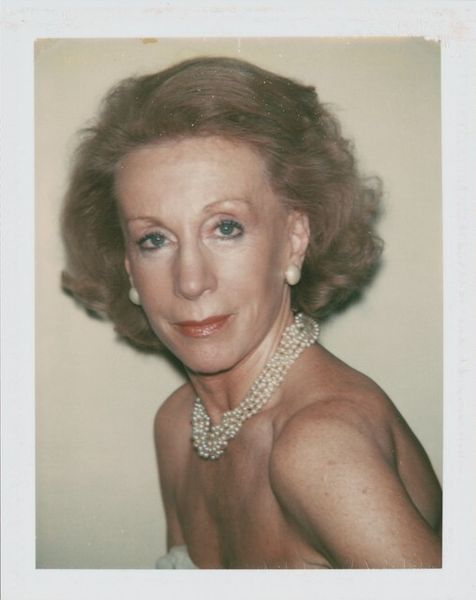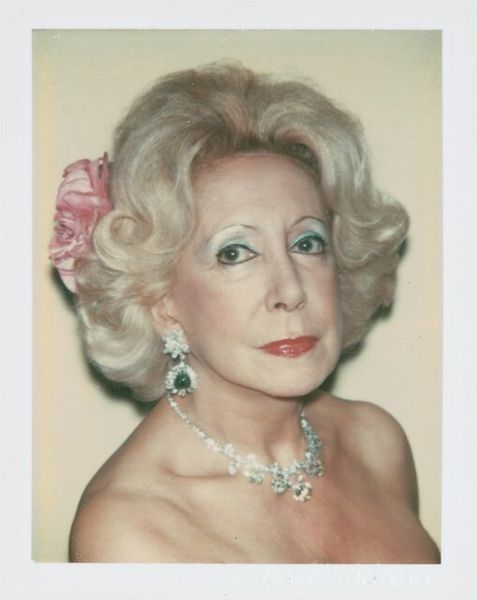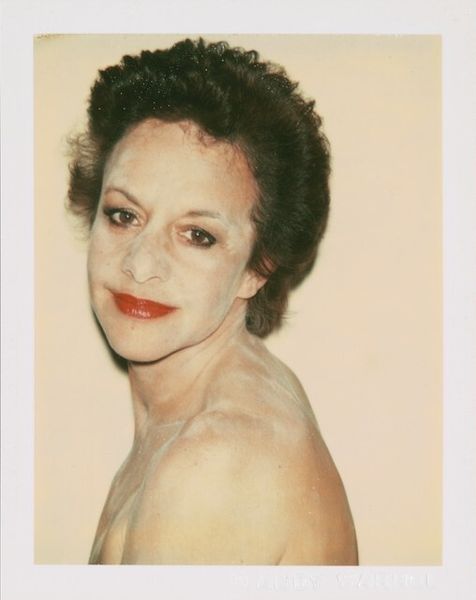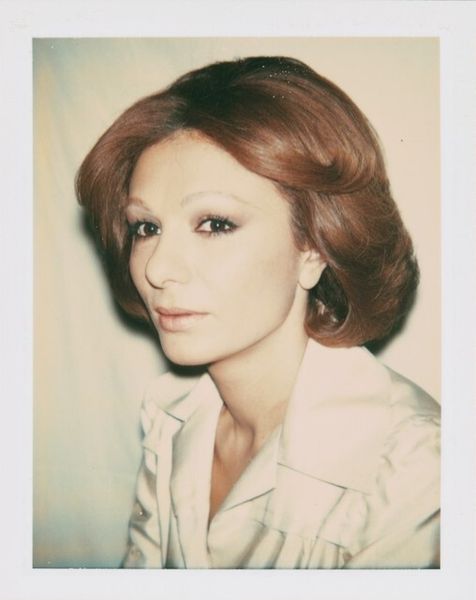
Dimensions: image: 9.5 × 7.3 cm (3 3/4 × 2 7/8 in.) sheet: 10.8 × 8.6 cm (4 1/4 × 3 3/8 in.)
Copyright: National Gallery of Art: CC0 1.0
Curator: Here we have Andy Warhol's photographic portrait of Ina Ginsburg, created in 1982. Editor: The first thing that strikes me is the soft, almost ethereal quality. The focus isn’t razor sharp, and there’s a kind of gentle light that flatters the sitter. Curator: The choice of the Polaroid format speaks volumes. Instant photography in Warhol’s hands elevated consumer technology to fine art. Consider the inherent limitations: the fixed size, the immediate result. This democratized portraiture. Editor: Yes, and that immediacy feeds directly into its symbolic power. The pearls, the styled hair, the confident gaze – it all speaks to a particular moment in American high society, doesn't it? Pearls traditionally symbolize purity and wisdom. Warhol uses that visual shorthand, layering meaning. Curator: The pearls, rendered slightly blurred, almost dissolve into the background. Their materiality is softened. He captures Ginsburg’s presence through a carefully mediated performance of wealth and social status, one achieved through commercial processes and chemical interactions. Editor: But what of Ina Ginsburg herself? To be captured by Warhol's lens carried a weight of cultural currency. Was she performing the role of societal matriarch, or was Warhol commenting on that performance itself? Curator: It's both, isn’t it? Her image becomes part of the larger Warhol project of observing celebrity, class, and the very act of image making and mass production in 20th-century America. Editor: The composition is also deceivingly simple. The sitter is slightly off-center. The negative space emphasizes the face as a mask, a persona. Even the apparent flaws become part of the narrative. Curator: True, this imperfection hints at a rejection of purely commercial ideals. Polaroid production always incorporates an element of chance. Warhol used the silkscreen process on similar portraits as well. Editor: So it’s not just the subject, but how the materials themselves—the film, the chemicals—participate in constructing meaning and status in the late twentieth century. I’ll remember that when viewing his other portraits too. Curator: Understanding the labor, processes, and materials used in the Polaroid unveils not just a photograph but a study of contemporary life.
Comments
No comments
Be the first to comment and join the conversation on the ultimate creative platform.













